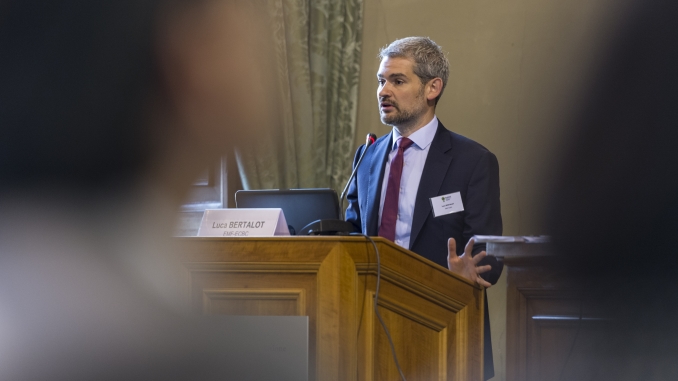
The Energy Efficient Mortgage Label will be launched on 12 February, offering a platform for lenders to provide data and transparency around green products and providing a “bridge” towards a greener market and potentially higher Taxonomy standards, according to the EMF-ECBC’s Luca Bertalot.
The launch is expected to come ahead of the delayed publication of EU Taxonomy technical standards. These were initially expected to have been finalised by mid-February, but are now not anticipated until at least March, given serious high level political differences around sectors such as gas and nuclear energy.
The proposed standards relating to green buildings have also proven controversial, and there is as yet no consensus among stakeholders whether the Commission will press ahead with its draft or allow a greater range of assets to be eligible.
But with the Commission potentially setting thresholds beyond current market standards, the Energy Efficient Mortgage Label (EEM Label) can act as a bridge towards the Taxonomy, according to Luca Bertalot, secretary general of the European Mortgage Federation-European Covered Bond Council (EMF-ECBC) and EEM Label administrator (pictured).
More generally, the EEM Label aims to encourage lending against green properties and for renovation, thereby contributing to the EU Green Deal and Renovation Wave Strategy, while providing a European benchmark and set of best practices, building on groundwork done by the broader Energy Efficient Mortgages Initiative (EEMI).
The Label platform will also provide transparency through a Harmonised Disclosure Template (HDT) – the counterpart of the Covered Bond Label’s Harmonised Transparency Template (HTT) – collating mortgage-specific data, which also ties in with the EEMI’s ambition of collecting data on lending against energy efficient properties to make the case for preferential regulatory treatment of such assets.
As of Wednesday, seven institutions were listed on the website, including non-bank lenders: BNP Paribas Fortis (of Belgium), Caja Rural de Navarra (Spain), Hemma Group (Sweden), OP Mortgage Bank (Finland), Stabelo Asset Management (Sweden), and two UCI entities, União de Créditos Imobiliários (Portugal) and Unión de Creditos Inmobiliários (Spain). The institutions are yet to fully populate their respective information pages, but all but one have green mortgage products listed therein, with UCI Spain having five separate loan types.
Bertalot said he expects further EEMI pilot banks to sign up to the new Label ahead of the 12 February launch.
“It’s important now to show market support for the initiative,” he told Sustainabonds. “We have strong political support from the Commission, we are working with consumer organisations for the first time, and there is a lot of interest from investors in such an ESG approach.
“So all the preconditions are there and I believe the EEM Label has a lot of potential.”
Three parts of the EEMI on which the EEM Label is building have benefited from EU Horizon 2020 innovation funding, and the EMF-ECBC is involved in three additional ESG-related projects on top of EeMMIP, which is currently in action developing the Label implementation sandbox in Scotland and the Province of Trento in. These are:
- A CEE Hub on energy efficiency finance, a project coordinated by the EMF-ECBC and involving Hungary (and the Central Bank of Hungary), Serbia (the Association of Serbian Banks) and the wider CEE region
- The Nordic Energy Efficient Mortgage (NEEM) project, coordinated by Copenhagen Economics
- TranspArEEnS, coordinated by Ca’ Foscari University of Venice, which aims to ease and standardise the collection of ESG-related data for SMEs, with one of three targets being that their borrowings may then become suitable as collateral for capital markets products such as European Secured Notes (ESNs).
“The CEE Hub and NEEM reinforce the geographic scope of the EEMI,” said Bertalot, “while the TranspArEEnS has a strong link to the real economy and can support the potential evolution of ESG ESNs.
“The support we have received under Horizon 2020 is nice recognition of the work that we do,” he added, “and we feel the responsibility to guide the market to concrete results, with the EEM Label being one such example.”



